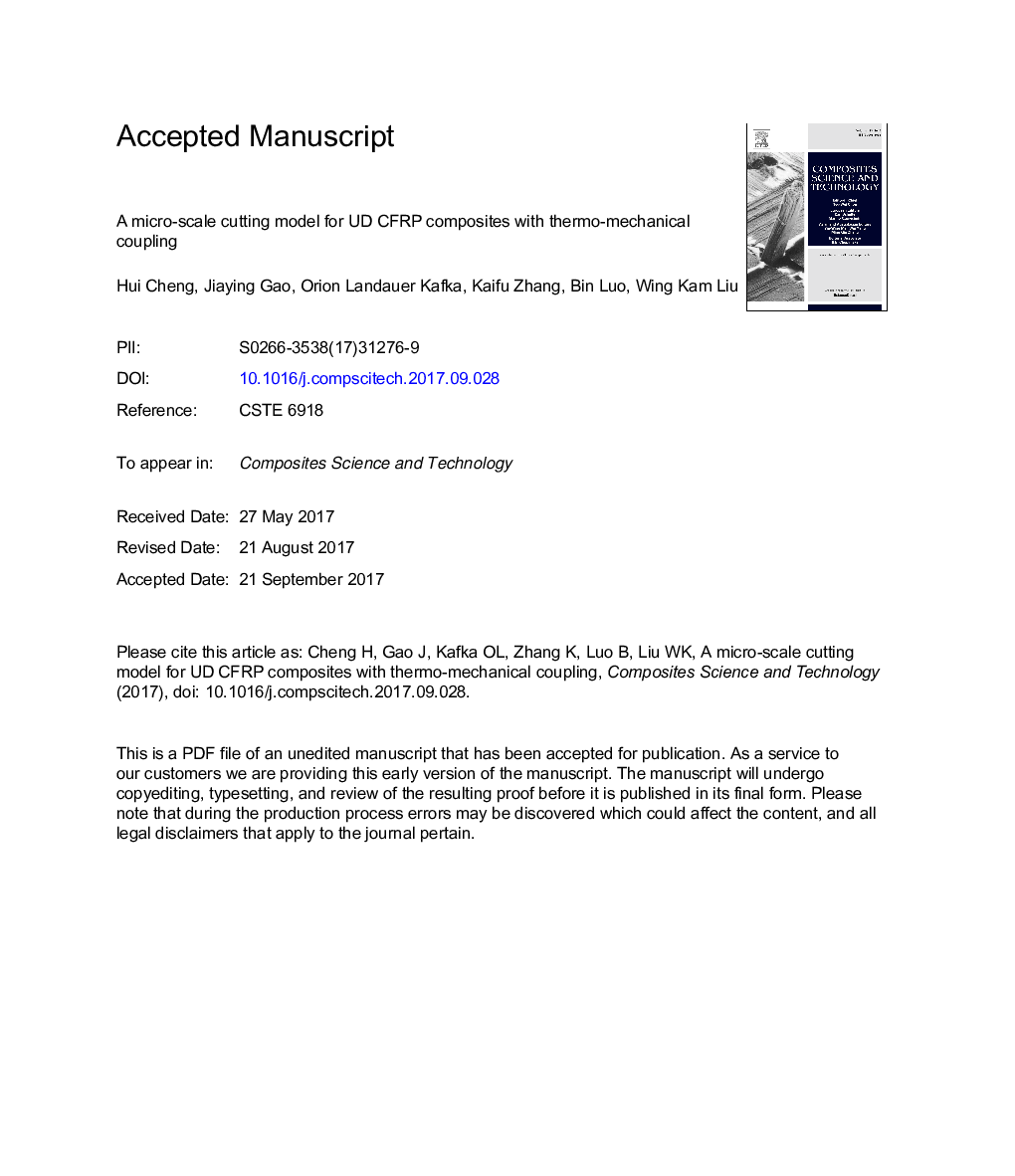| Article ID | Journal | Published Year | Pages | File Type |
|---|---|---|---|---|
| 5021960 | Composites Science and Technology | 2017 | 25 Pages |
Abstract
Cutting a unidirectional carbon fiber-reinforced polymer (UD CFRP) structure is the basic unit for CFRP machining, which is a complex thermal-mechanically coupled process. To reveal the deformation mechanism and predict cutting force in UD CFRP micro cutting, a micro-scale fracture model for UD CFRP cutting with thermal-mechanical coupling is demonstrated in this paper, which captures the failure modes for fibers, matrix and the interface based on a micro-level RVE using a relatively simple damage-based fracture method. The thermal-mechanical coupling model at the micro scale is developed on the basis of the plastic energy dissipation and frictional heating during cutting. Failure models for the fiber, matrix and interface region are applied depending on the material properties of each of these three phases. Numerical simulations based on the above model with different fiber orientations were performed to predict the deformation and forces of different components in UD CFRP. Cutting experiments with the same fiber orientations as considered in the simulations were carried out to validate the force and deformation results. The predicted force and deformation patterns match well with evidence from our experiments. In general, the cutting force is larger than the thrust force regardless of fiber orientation. The cutting force reaches a maximum as the fiber orientation approaches 90°, but thrust forces do not vary substantially across cases. When the fiber orientation is acute, the deformation of fibers is much smaller than when the cutting angle is obtuse. Surface roughness follows the same trend with cutting angle as fiber deformation.
Related Topics
Physical Sciences and Engineering
Engineering
Engineering (General)
Authors
Hui Cheng, Jiaying Gao, Orion Landauer Kafka, Kaifu Zhang, Bin Luo, Wing Kam Liu,
